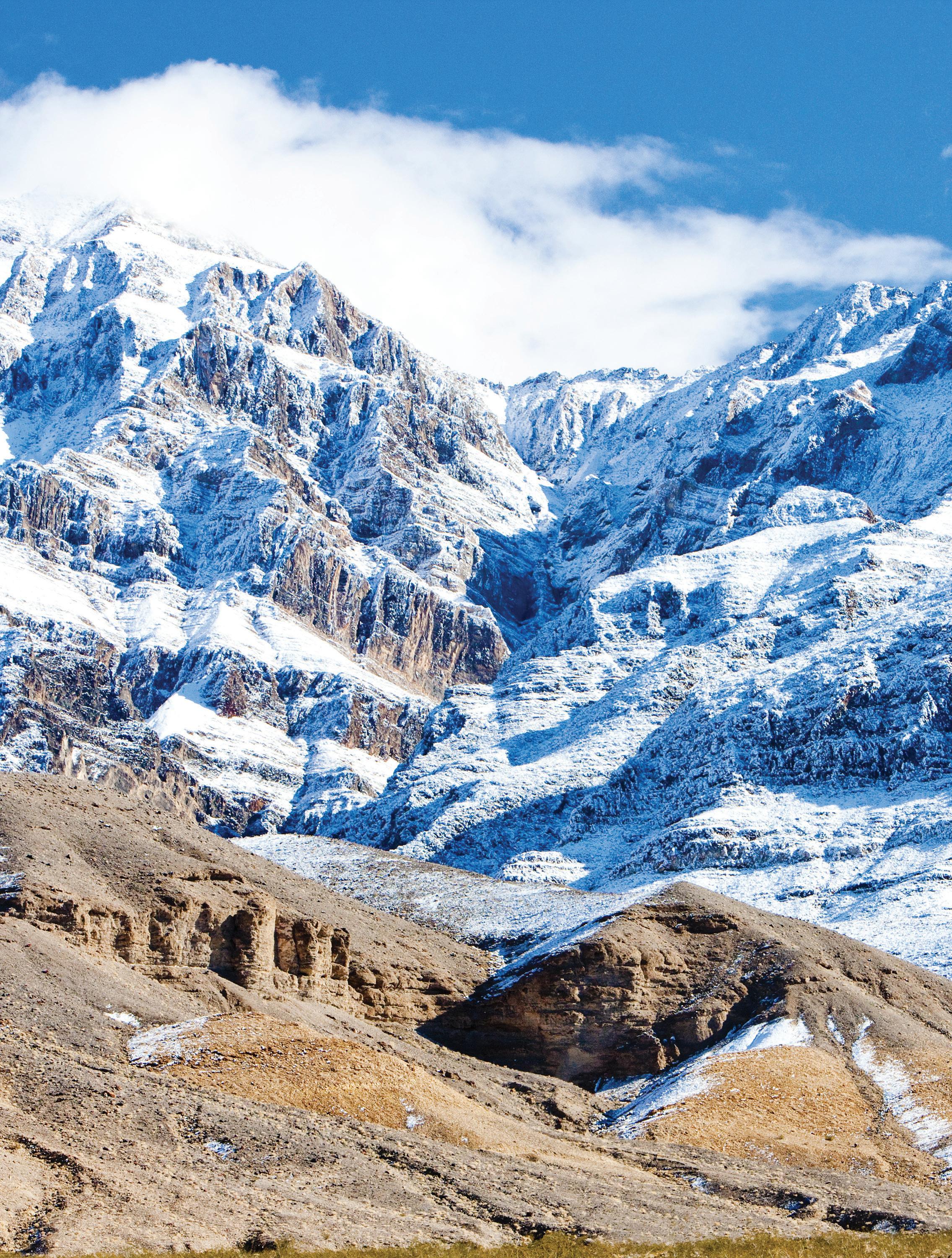
3 minute read
National Parks in Winter America’s Best Kept Secret
BY: RENÉ MACK
Visiting America’s National Parks in the wintertime is beautiful, enchanting and exhilarating. Just because the weather changes, keep the hiking boots close at hand, add some warm layers of clothing, and experience the magical winter sights of these National Parks. Yellowstone, Zion, Death Valley, and Grand Canyon South Rim are open year round and are full of adventure during the winter months. These parks are quickly becoming knowns as America’s best kept secrets and the number of visitors are much less during the winter months which makes social distancing easier. All of the parks have different types and price points for lodging. It is best to contact the parks to learn about the options each has to offer for visitors.
Advertisement

Yellowstone National Park is approximately 3500 square miles in size. Located mostly in Wyoming, this vast parks spreads also into the states of Montana and Idaho. The park is full of beautiful canyons, alpine rivers, lush forests, hots springs and gushing geysers. The park is also home to hundreds of animal species which include bears, elk, antelope and grey wolves. During the winter months is it common to see grey wolves moving amidst the snowy landscapes. Geyser viewing opportunities are also heightened during the winter months. Temperatures do plummet, however so do the levels of guests visiting, and in an age of social distancing this makes the experience even better.

Named for the Hebrew word "refuge," Zion National Park in Utah, known for its apricot colored canyon, is one of the most beautiful places on earth. After careful consideration and consultation with local and state health authorities, Zion opened in May and will continue to welcome visitors this winter. Zion is famous for seemingly endless breathtaking views. This beauty is located only166 miles from Las Vegas, and the juxtaposition of city verses nature could not be more apparent. There are many sunshine filled days with moderate temperatures throughout the winter. The winter months can be a good time to bike the scenic drive, hike, cross-country ski, snowshoe up to Kolob Terrace Road, and view the wonderful wildlife.

Death Valley National Park, the largest national park in the Lower 48 States is approximately 3.4 million acres, which translates to about 710 acres of land per staff and guest. Social distancing, for that matter civilization distancing, is one of the resorts primary features. Death Valley is very accessible. It is a two hour drive from Las Vegas, and a four and a half hour drive from Los Angeles. Death Valley is warm in the winter with an abundance of sunshine, almost no rain, and earth warmed waters of 85 degrees. The average high temperature in January is 68 degrees and 75 degrees in February. This is where escape artists find the great escape, that romantic getaway, stunning landscapes, the darkest of star-filled skies and seemingly endless outdoor activities, including a must-play USGA golf course which is the lowest elevated golf course on the planet. This beautiful National Park is legendary not only for its location and spectacular views during the day, but also is a great location for stargazing in this “gold tier” dark sky park.

Winter at Grand Canyon South Rim is magical and offers a very different perspective on this world wonder than in the summer months. This majestic park is known for its mild temperatures, beautiful sunrise and sunsets, smaller crowds and amazing wildlife. During the winter months the crowds thin out to less than 10% of the number of annual visitors, the pace slows down, and everything at Grand Canyon’s South Rim is quieter. Sunrise and sunset are phenomenal because the winter sun is lower in the sky meaning it doesn’t set directly over the canyon, but instead cloaks the rocky peaks and crevasses in lovely purple, pink, and orange hues. The nights sparkle in this certified dark sky park where you can see the Milky Way with your naked eye. Sunrises can be equally spectacular. In-the-know photographers appreciate this time of year for the clarity of the light, especially just after a snowstorm. Due to clear skies, the visibility is highest in this season. Mountain peaks some 200 miles away can be seen from some viewpoints on a clear winter day. Additionally, wildlife is plentiful and is easy to spot against a new blanket of snow. You may see mule deer, elk, ravens, rock squirrels, and other creatures foraging among the ponderosa pine forests and soaring overhead on the rim.










